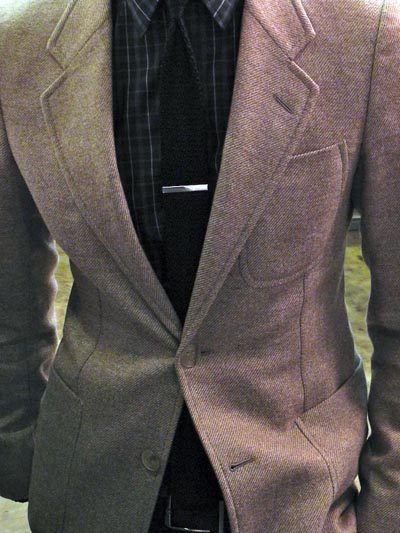The tie clip (also called the tie bar & tie slide) is a piece of men’s jewelry that dates back to around the turn of the 20th century.
Prior to then, men’s ties were folded constructions, varying in complexity from the fairly straightforward to the downright architectural.

Some styles needed to be held in place with straight pins, which jewelers decorated the ends of, creating the first piece of men’s necktie jewelry — the “tie pin.”
When fashion straightened men’s ties out into the straight up-and-down shape we’re familiar with today, the long, vertical tie pins became less useful. Around the same time trends started leaning toward very finely-woven silks and similar materials, the fragile weaves of which would start to unravel if you stuck them with a pin too many times.
The tie bar or tie clip was a straightforward design solution. Instead of a pin that slid in and back out of the fabric, a flat piece of metal was bent into a tight “U” shape and slid directly around the tie on both sides.
This could be done to just hold the two tails of the tie together, but men immediately started using it to clip the tie to their shirtfront as well, preventing it from swinging away from the body.
That’s still how we use tie clips today. They’re a simple, practical piece for anyone who doesn’t want his necktie swaying too far away from his chest. That could be a safety precaution — say, for a traveling sales rep who occasionally finds himself on factory floors or other heavy machinery areas — or simply a safety precaution for the diner who’s dipped his tie in his sauce one time too many.

No comments:
Post a Comment